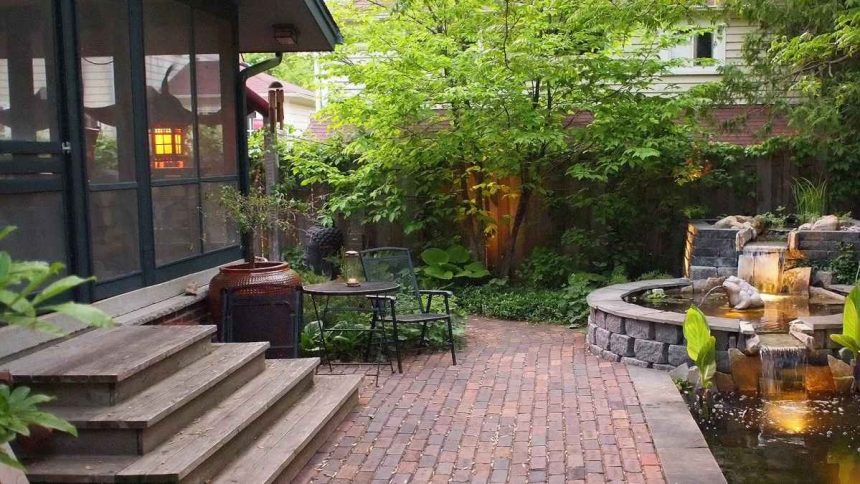Your patio is more than just an outdoor space; it’s an extension of your home where you get to relax, entertain, and enjoy the sun. When making your dream patio, picking the right paving material is undoubtedly one of the most important decisions. With a wide array of options, however, each with its own benefits and downsides, picking one that suits you best can be challenging. Not to fret though as in this comprehensive read, we are going to provide all the necessary information to help you make the right decision.
Understanding Your Patio Paving Material Options
1. Concrete Pavers
Concrete pavers are among the most popular choices for most people due to their versatility and affordability. They are available in different sizes, shapes and colours, allowing for a customized look. They are also low-maintenance, durable and can be installed in numerous patterns.
2. Natural Stone
According to rdcpaving.ie, if you’re looking for a timeless and elegant look, then natural stone might be the perfect choice. Natural stone includes materials such as limestone, granite and flagstone, all of which provide unique texture that can really transform your patio. However, it’s important to note that natural stone can be more expensive than other options and may require occasional sealing to maintain its appearance.
3. Brick
Brick is known for its durability and lending a rustic and charming look to any outdoor space. It comes in a variety of shades, ranging from earthly tones to rich reds. This allows you to achieve the exact desired aesthetic for your outdoor space.
4. Poured Concrete
This is a great option to consider if you are going for a sleek and modern look. Poured concrete gives a clean and uniform surface that is customizable with different finishes such as stained or stamped concrete.
5. Wood
Wood is a warm and natural material that can add a touch of rustic charm to any patio. However, wood is not as durable as other materials and can be susceptible to rot and decay.
6. Composite
This is a man-made material that is made from a mixture of wood and plastic. It is a durable and low-maintenance option that is also relatively affordable. However, composite may not have the same look and feel as natural materials.
Factors to Consider
(i) Aesthetic Appeal
The first aspect to consider is the overall style or vibe you want. Are you going for a cozy and traditional feel or do you want a contemporary and sleek look? Ensure the paving material matches your aesthetic preferences.
(ii) Durability & Longevity
Next, consider how often your patio will be used and the climate in your area.
Some materials, like natural stone and brick, are exceptionally durable and can withstand various weather conditions. Others, like concrete pavers, are also sturdy but may require occasional maintenance.
(iii) Budget
Your budget plays a key role in the patio paving material you should pick. For instance, Concrete pavers and poured concrete tend to be more budget-friendly, while natural stone and high-quality brick can be pricier options.
(iv) Maintenance Requirements
Different materials come with varying maintenance needs. Natural stone may need periodic sealing to prevent stains, while concrete pavers are generally low-maintenance. As such, consider how much time you’re willing to dedicate to patio upkeep.
(v) Complexity of Installation
Some material options have more complex installation processes than others. So, if you are taking the DIY route, go for materials that are easier to work with like concrete pavers. If you are hiring professionals, you have the option to pick options like natural stone that call for specialized skills.
Making the Right Decision
1. What are Your Priorities?
Begin by writing down your priorities. Is it durability, aesthetics, or a combination of these factors? It’s best to have a clear idea of what is important to you in order to guide your decision-making process.
2. Visualize the Outcome
Take a moment to imagine how each paving material will look in your outdoor space. Consider your home architecture, landscaping and furniture to ascertain not just a cohesive, but visually pleasing end result.
3. Seek Professional Advice
Consult with landscaping professionals or contractors who can provide expert guidance based on your specific needs and circumstances. These individuals will provide insights into the best material for your location’s climate as well as the intended use of the patio.
4. Consider Samples
If possible, ask for samples of your preferred materials to see how they look in your actual outdoor space. Doing this in different lighting conditions will help you make a better decision.
The Takeaway
Picking the right patio paving material is an important decision that affects both the look and functionality of an outdoor space. Whether you’re drawn to the affordability of concrete pavers, the elegance of natural stone, the charm of brick, or the modernity of poured concrete, understanding the factors that matter most to you is key. Use the information in this read to create a patio that’s elegant and stands the test of time.
Lynn Martelli is an editor at Readability. She received her MFA in Creative Writing from Antioch University and has worked as an editor for over 10 years. Lynn has edited a wide variety of books, including fiction, non-fiction, memoirs, and more. In her free time, Lynn enjoys reading, writing, and spending time with her family and friends.















